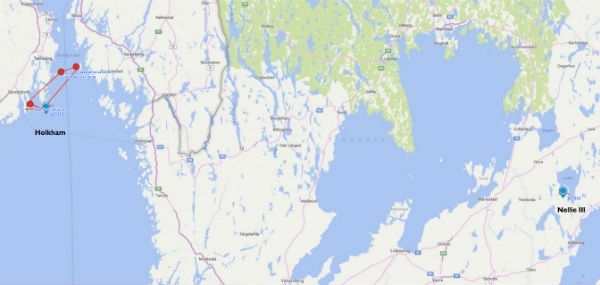By Chris Heward, Wetlands Research Assistant
Although the first migrant woodcock are now appearing in the UK, there’s many more that have yet to arrive. As our satellite-tagged birds show, there are some woodcock that have still yet to begin their autumn migrations.

We have heard from two of our satellite-tagged woodcock, Nellie III and Holkham, as recently as the 29th & 22nd October respectively - and there's no sign of migration from these birds yet. These are both Scandinavian woodcock, and having a shorter distance to travel than their Russian equivalents, can probably afford to depart a little later.
But Sir John and Phynodderee, both of which spent their summers in Russia, transmitted on the 17th October and 21st October and were still in Russia at the time. It could be that they have since left their breeding sites and are heading west, but this will only be confirmed when we receive more up-to-date data.
Phynodderee in particular, has a long way to travel having flown as far as the Komi Republic (read this blog about her wanderings). Temperatures in the Komi Republic’s capital, Syktyvkar, are still around 1°C; a level that woodcock can tolerate. Nevertheless, Phynodderee might want to think about moving before the Russian winter sets in, as colder temperatures are certainly on their way.
Meanwhile, we are already receiving the first reports of migrant woodcock arriving in Britain. Such an extended migration period is normal, with some woodcock arriving in Britain while others have yet to leave their breeding sites. These different arrival and departure dates probably reflect differences between the different breeding locations across Europe, but also between youngsters and adults, with the latter often arriving later.
This is one of the reasons why we recommend, to those who wish to shoot woodcock, that they should not be taken until the 1st December. Whilst the first autumn woodcock are being seen across the east of the country now, it will take time for numbers to build up to their full winter levels. Shooting before this point is reached will increase the risk to our declining resident breeding population.